Last week, I published the wildly popular “12 Mainstream Pregnancy Lies You Likely Believe.” If you haven’t read it, then you definitely should. But, when I sat down to come up with the list (with the help of several other mamas), I realized there were really far more than 12 lies. Thus, this ‘part 2’ of the post was planned at the same time as the first part.
It’s sad, honestly, that there are this many lies out there, but — well, there are. (There are probably even more than this, really.) It’s important to know this information — because when you are pregnant, you deserve information from all perspectives, and the right to make your own choices. The scare tactics from the mainstream, and the whole “Listen or your baby will die” crap needs to stop. And it won’t stop until we, as women, stand up and say “I have the right to balanced information, and you will respect my choices.”
Let’s go!
12 (More) Mainstream Pregnancy Lies
13. Women and Babies Used to Die a Lot, so Listen to Your Doctor
This one is driving me crazy right now. Yes, women and babies did die at much greater rates 150 years ago. But I guarantee that the reason that deaths have gone down so sharply is not that women started blindly following doctors’ advice. And even if doctors had caused the rates to drop, it doesn’t excuse bullying women into specific decisions or even medically assaulting them if they don’t comply, especially in non-emergency situations. That is definitely happening and it’s not okay.
The actual rates of maternal mortality were about 6 to 9 in 1000 back in the mid-1800s. This began to drop sharply in the 1930s and was just 7.7 per 100,000 in 1997. Unfortunately, it’s risen from there and is around 12 per 100,000 today. (And yeah, that’s due to medical bullying, increased unnecessary c-sections, and more.) The reason that levels dropped so sharply is largely because doctors began to wash their hands between patients and they used other more sanitary procedures. It has nothing to do with the ‘interventions’ in childbirth at all.
Now, obviously c-sections and so on can save lives and have been responsible for some of the reduction, but these interventions were not the main reason. And again, regardless of how great a procedure is, there’s no justification for forcing it on a woman, lying to her about her need for it, or ignoring the right of informed consent.
14. Natural Birth is Dangerous/Unnecessary
There are people who will say that birth is inherently risky, dangerous, and that it requires being a hospital (because “what if?”). But birth, for most, is not risky — at least not more so than driving a car. Still, others say natural birth is just ‘unnecessary.’
However, birth is natural (and by this I mean, a normal condition of the human experience, not a pathogenic one). That doesn’t mean it’s going to go perfectly every time and it doesn’t mean interventions are never needed. It means for most women, interventions aren’t needed. And, every intervention comes with a risk of its own. Induction, monitoring, c-sections — they’re not straight-up benefit.
Plus, natural birth has many benefits. The natural hormones produced help dull pain, promote bonding between mom and baby, promote initiating breastfeeding, reduce depression or anxiety postpartum. And, baby gets seeded with friendly bacteria, is awake and alert, mom may experience less bleeding and faster recovery (than an intervention-filled birth). A lot of women also feel a sense of accomplishment and pride in going through such an overwhelming experience — although this isn’t the primary reason women have for wanting a natural birth.
That’s why natural birth should be the default, and interventions should be used if and only if the benefits of using them outweigh the risks of doing so.
15. Early Cord Clamping is Better/Delayed Clamping is Dangerous
Not even a little bit.
Sadly, when I search for “delayed cord clamping” the first suggestion that pops up is “…risks.” Obviously, the perception is still that it’s risky! I’ve even heard people say that the blood will drain out of the baby if you don’t cut it (no), that it will cause serious jaundice (no), the baby can’t breathe until it’s cut (no), and other ridiculous objections.
However, a piece published in the Journal of Obstetrics and Gynecology disagrees! It’s called “Time to implement delayed cord clamping.” Most major medical evidence shows that waiting at least 2 or 3 minutes (until it stops pulsing) is the best plan and is associated with better outcomes than immediate clamping. It’s just that hospital policy hasn’t caught up with current research yet. Delayed is definitely better.
16. There are Signs That Baby is Coming Soon For Sure
Sorry, but no.
There is no way to know when a baby will arrive for sure. Internal exams don’t tell you (I covered the myth of dilation in the first part). Loose stools aren’t for sure. Not even contractions are for sure because they can start and stop for days or even weeks. Basically, until contractions are regular, strong, and baby’s crowning…there’s no way to know. But yes, once the baby’s crowning, it is soon for sure! 🙂
17. Pushing Must Be Done On Your Back While People Count
It’s the way it is in hospitals and most movies, right? A laboring woman is on her back, with her legs being held back by nurses and her husband, or up in stirrups. Everyone’s telling her when to push and counting to 10. This is also known as “Purple Pushing” (because a woman’s face often turns purple due to the effort) and no — it’s not the best way to get baby out.
In fact, pushing in just about any position other than on your back is best. Being on your back means the baby has to go “uphill” at the end to clear your sacrum (lowest part of your spine), and it also makes the pelvic opening smaller. Being semi-upright, standing, on hands and knees, even on your side — these are all better positions in which to push.
As far as counting, the best way to push is to listen to your body. Contractions at the end usually lead to involuntary pushing when it is time, and pushing may last only a few seconds or several. There’s no need to count or have someone else direct pushing — you know what feels right.
This may not be possible for women who have had an epidural, which is why the whole on-your-back-and-counting started in the first place. But for unmedicated women, it’s definitely not necessary.
18. Labor is Super Painful And You Need the Drugs
I’m not going to lie, labor is hard. It’s work. And yes, it can be painful. It’s a totally different kind of pain, though, than the sharp pain that comes with an injury or something that’s not supposed to happen. Remember that your body is meant to open up for your baby. It’s a strong, aching sort of pain, a progressive pain. At the point where you think you can’t take it anymore, it’s almost over!
Thousands of women every year give birth without medication. And historically, all women did. You don’t “need” the drugs to get through labor, and you are not being a hero or expecting some kind of medal in the recovery room if you go without them.
The way to handle this is to let women know that, if they are struggling or have a preference for medicated labor, there is pain relief available. But, we shouldn’t assume all women should have drugs or that women who don’t want them are crazy or bad. Women shouldn’t be laughed at for saying they want natural childbirth. And women shouldn’t be shamed if they do choose the drugs.
Personally, my one medicated labor was scarier and more painful than my four unmedicated labors.
19. Epidurals, Pitocin, etc. Do Not Come with Risks
This is probably one of the most maddening lies out there. Many women (and sadly, many doctors) brush off the risks of epidurals, Pitocin, forceps, vacuum extraction, etc. as if they were minimal or did not exist. This is absolutely not the case! When women have the perception that these interventions bear no risk, and avoiding interventions is risky, they are more likely to accept a highly managed delivery.
One study shows that women who have epidurals are less likely to deliver vaginally, have longer labors, have higher rates of assisted (vacuum/forceps) delivery, higher rates of fever during labor, higher rates of newborns with sepsis, and more. Another study shows a strongly increased risk of c-sections in women who choose epidurals. Plus, sometimes epidurals don’t work, cause severe headaches (which may last for weeks), and more.
Pitocin isn’t so innocent either. A recent study shows an increased risk of autism when mothers had Pitocin during labor. Misusing Pitocin can also increase the risk of c-section, fevers, presence of meconium, 5 min. APGAR of less than 7, and more. Pitocin has also been strongly associated with an ADHD diagnosis later in children.
C-sections increase the risk of autoimmune and many other illnesses later in life (for baby) because of the lack of exposure to vaginal flora — although this is greater in scheduled c-sections than emergency ones or those performed after natural labor onset and rupture of membranes. Of course, there is also the risk of cutting the mother and/or baby or otherwise causing injury, the risk of infection, the length of time it takes to heal, and more. In one study, 16% of mothers had a surgery-site infection with typical management.
Obviously, these are risky! There’s a time and a place for them when circumstances exist that necessitate a quick delivery of the baby. But they should be used only when the benefits outweigh the risks, and not ever thought of as just “something we do.”
20. Breech Babies and Twins Must Be C-Sections
Nope!
Both breech babies and twins do have higher risks than vertex singletons do, that’s true. But these risks aren’t outweighed by the risks that a c-section poses (see above for c-section risks). In fact, new studies show that with careful selection, breech vaginal delivery is nearly as safe as vertex delivery. For women who had had a previous vaginal delivery, the risks were few to having a vaginal breech.
As for twins, this recent study showed that c-sections did not reduce the risks to twins, vs. vaginal delivery. A small study shows that even VBAC twins (women who had c-sections with a singleton and attempted a VBAC with twins) did not have increased risks, except potential NICU stays for the second twin. Basically, unless twin A is breech or a woman goes into labor prior to 32 weeks, vaginal delivery is just as safe as a c-section.
21. It’s Not Safe to Labor Too Long/After Water Breaking
This is so complicated because the guidelines that exist differ vastly depending on region, facility, etc. Some say that labor can/should only last a certain number of hours — most doctors look for approximately 1 cm of dilation per hour of labor. However, as long as mom and baby are tolerating labor well, there is really no reason for arbitrary time limits. If mom is getting exhausted or if baby is showing signs of distress, then these are medical indications that some help may be needed. Length of labor alone is not a reliable indicator.
As for length of time your water can be broken. Guidelines now range from 72 hours to no time (i.e. come to the hospital immediately after your water breaks and they’ll administer Pitocin to get the contractions going). But this is not necessary. There are women whose water breaks at 20-some weeks, who sit on bedrest for weeks at a time, who are not considered at greater risk of infection. Plus, there’s no evidence of significantly fewer infections or improved outcomes from induction after water breaking vs. waiting (all of the evidence is summarized here).
Be smart though — if your water has broken, don’t have sex, get internal exams, take a bath, or do anything else that introduces foreign bacteria into your vagina, which will increase the risk of infection.
22. GBS is Common and Requires Antibiotics
It’s sort of true — colonization with GBS (Group B Strep) is pretty common. But, colonization isn’t associated with adverse perinatal outcomes. Another study shows that routine antibiotics for GBS+ women in labor very slightly reduces transmission to newborns, but doesn’t change the number of deaths that occur. Since antibiotics themselves come with very serious risks to both mother and child (antibiotic resistance, wiping out healthy gut flora, risk of opportunistic infections), there’s no reason to have them prophylactically. Babies can and should be monitored in the days following birth, for fever, poor feeding, difficulty breathing, unusual color, etc. and should be seen if needed.
GBS infection is very uncommon, can occur in babies whose mothers tested negative at delivery, and prophylactic antibiotics don’t change the rate of serious infection or death — that’s the bottom line.
23. Without All The Tests, Your Baby Will Die
This is also an incredibly stupid myth.
First of all — and this is extremely important — testing does not, in and of itself, prevent anything. Testing only identifies risk factors or conditions that may need treatment. In many cases, it is sufficient to do testing only if a woman is displaying symptoms of an issue, and treat at that point. (In no way am I suggesting ignoring symptoms or important risk factors!)
Most of the tests that pregnant women are faced with do not promote better outcomes. For example, genetic screenings (unless you have a family history and/or would consider terminating a pregnancy). I covered internal exams in the first post. Many blood tests are not necessary, especially if you know that you do not have STDs (with the exception of the hemoglobin test, which can give important information for some women). I covered GD testing in the previous post, too.
Do not submit to any test without getting the full information on it. It may very well not be necessary for you. And regardless, it is flat-out wrong to say that your baby “will” die if you do not get any particular test! Anytime someone tells you that your baby will die unless you _____ (barring, of course, actual emergency circumstances), you should stop listening and walk away. If the person can’t communicate in a more respectful and balanced fashion, they aren’t worth your time.
24. Vitamin K, Hep B, Eye Ointment are Necessary
No.
Let’s start with the eye ointment. This is typically erythromycin, an antibiotic, used to prevent blindness. Blindness would typically be caused by gonorrhea. If you don’t have STDs, then you do not need it. It’s administered to everyone in case the mother has not been tested for STDs, or in case she’s lying about her sexual history. If you do have an STD, then it’s probably worth it to prevent the problem, but if you don’t (most women), it’s not needed. And, it hurts baby’s eyes and can interrupt early bonding.
Hep B shots. Well, any time we talk vaccines, we open a can of worms. Still, let’s go for it.
In the case of mothers with chronic Hep B infection, the transmission rate to their babies was less than 1%. This was reduced by taking anti-virals in the third trimester of pregnancy. Babies are not at risk for Hep B infection in any significant way unless their mothers are positive. (Biggest non-maternal risk factors include intravenous drug use and risky sexual behavior, which do not impact infants.)
One study showed that when rhesus monkeys were given a Hep B vaccine at birth (vs. saline or nothing), they experienced significantly delayed reflexes — key reflexes, like rooting and sucking. Another study showed a three-fold greater risk of autism in those vaccinated at birth vs. later or never. Also, a study of teens who had been vaccinated as infants showed that just 24% of them actually had clinically significant antibody levels at that point.
The risks of a Hep B injection, in my opinion, outweigh any benefits.
As for vitamin K, here’s a comprehensive post I wrote about it months ago. The bottom line, though, is that late-onset bleeding is exceedingly rare, we don’t know why all newborns are born with low levels of vitamin K (so clearly, that’s the biological norm), and it most likely is related to gut flora. More and more, we recognize that gut flora has a lot to do with our health, and we know that gut flora synthesizes vitamin K when it’s time. Lactobacillus, one of the primary types of flora in a newborn, doesn’t; but bifidobacteria, another primary type of flora, does. I would personally choose to supplement with a quality probiotic containing bifidobacteria during pregnancy and postpartum rather than getting a vitamin K shot.
That’s it for our second set of pregnancy lies! Which ones did I miss? And which other types of ‘lies’ posts would you like to see in the future?

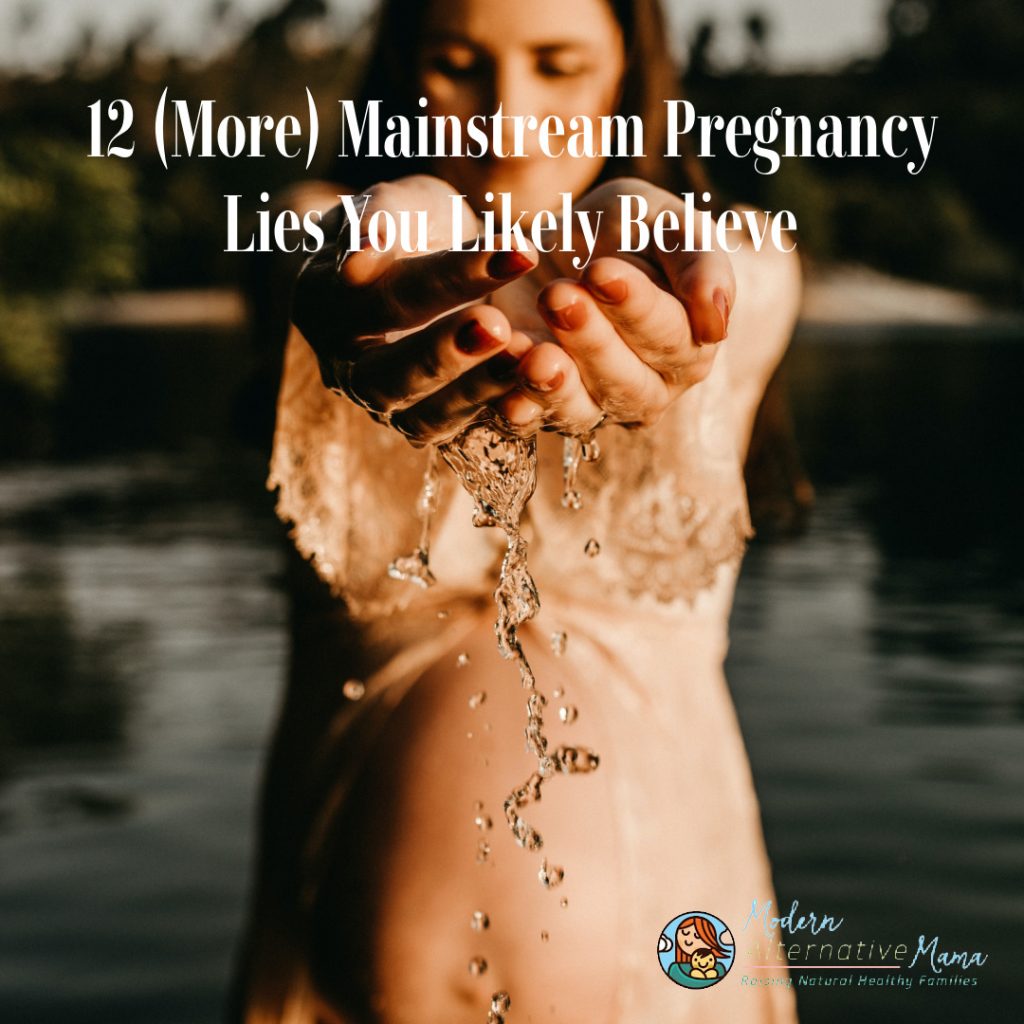
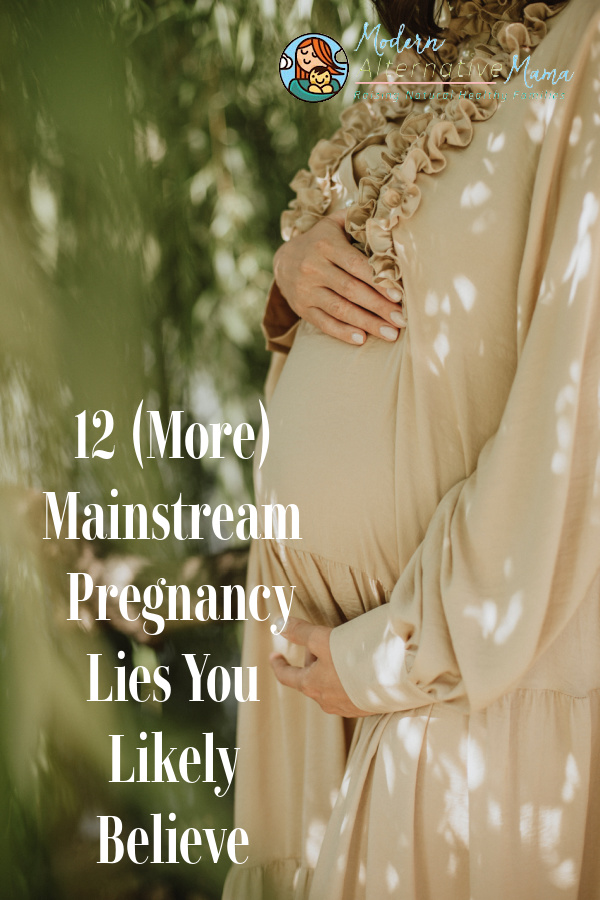
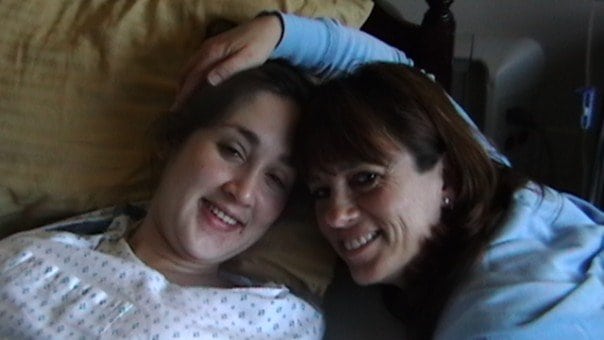

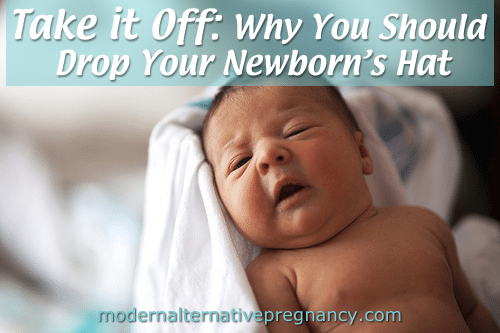
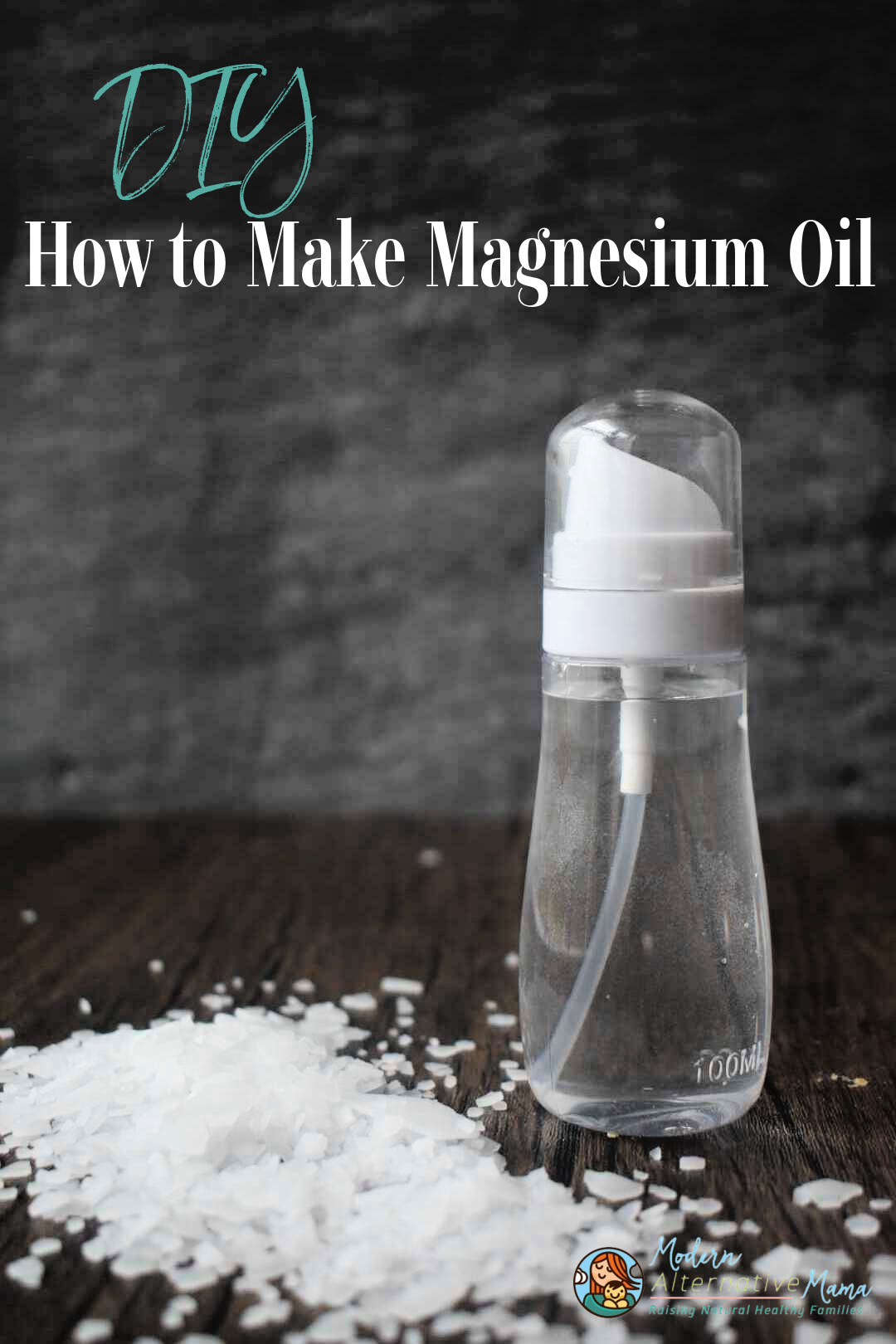

Hi there 🙂
This list is fantastic!! Thank you so much.
I have a friend who is seeing a midwife, is due any day now, but baby just doesn’t seem to be coming. They gave her an induction date of next Saturday, says baby is at lease 9 lbs 7oz (which I agree is practically impossible to determine). She’s still in the midwife’s care, and the reason is apparently due to placental failure, which doesn’t quite seem legitimate to me. Can you speak to the possible misconception that after a certain date overdue, that the placenta fails/dies and can put the baby at risk of death?
I could see this as a possibility if the pregnancy was to 45-50 weeks, but at 41-42 weeks?
Hi Lia,
As a pregnancy ages, the placenta can work less optimally. But there’s no reason to believe that’s the case solely because of how long a woman has been pregnant. If there are other symptoms — like swelling high blood pressure, dizziness, etc. — then intervention may be needed. In a normal situation, if the placenta is not functioning well, labor will be triggered and the baby will be born. If that is not happening, and mom is feeling well and baby is moving well, then it’s very likely that all IS well and waiting is the best plan. Hopefully the midwife is well trained in this!
On my second baby, my water broke at 38 weeks. Upon delivery, we found my placenta was about shot, so it can really vary from pregnancy to pregnancy. I carried my first to 40+1 with no issues.
Hi Kristina,
You’re right, it can vary. But your body did exactly what it should have — triggered labor when your placenta was no longer functioning well. That’s awesome!
This is a very interesting list. I had my daughter 9 months ago and never heard one of these. I did get an epidural but it was almost annoying how long it took them to go through all the risks that come with an epidural lol. I didn’t hear any of these others but I will definitely keep them in mind
I have 10 children, some born at home and some not. I’ve thankfully never needed a c-section, even when I birthed my twins at home at 41+1 weeks. God has blessed us abundantly!
What about rhogam?
Thanks so much for the great articles! Some of your links on this article and others are not working, thought you’d want to know.
Should add the myth, if your baby is xx big then you will tear so bad it’s better to do a c-section. A friend just told me this one. Scared her so bad she is doing the section.
This is why I wholeheartedly recommend home birth to all mom’s who question medical intervention. Find a good midwife, and do what ever you want at home. Don’t go into the hospital. The hospital is full of medically trained individuals that are concerned about safety and sometimes that involves interventions. If you don’t want interventions, stay at home and have your baby. I wish you lots of luck.
[…] writing two popular posts recently, 12 Mainstream Pregnancy Lies You Likely Believe, and 12 (More) Mainstream Pregnancy Lies You Likely Believe, several people asked me to talk about baby […]
[…] You should also look for a post called “12 Mainstream Baby Lies You Likely Believe,” which I’m planning for July 28th. And make sure that you didn’t miss “12 Mainstream Pregnancy Lies You Likely Believe,” or “12 (More) Mainstream Pregnancy Lies You Likely Believe!” […]
[…] Believe it or not, these are only some of the myths out there! Next week we’ll be covering 12 more. (Here’s part 2!) […]
[…] 12 {More} Mainstream Pregnancy Lies You Likely Believe […]